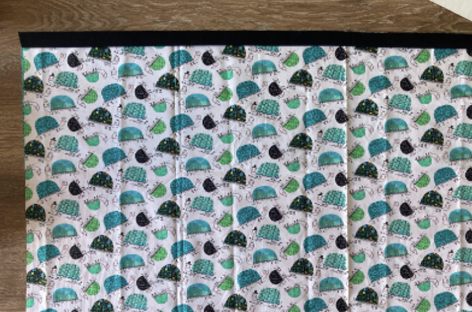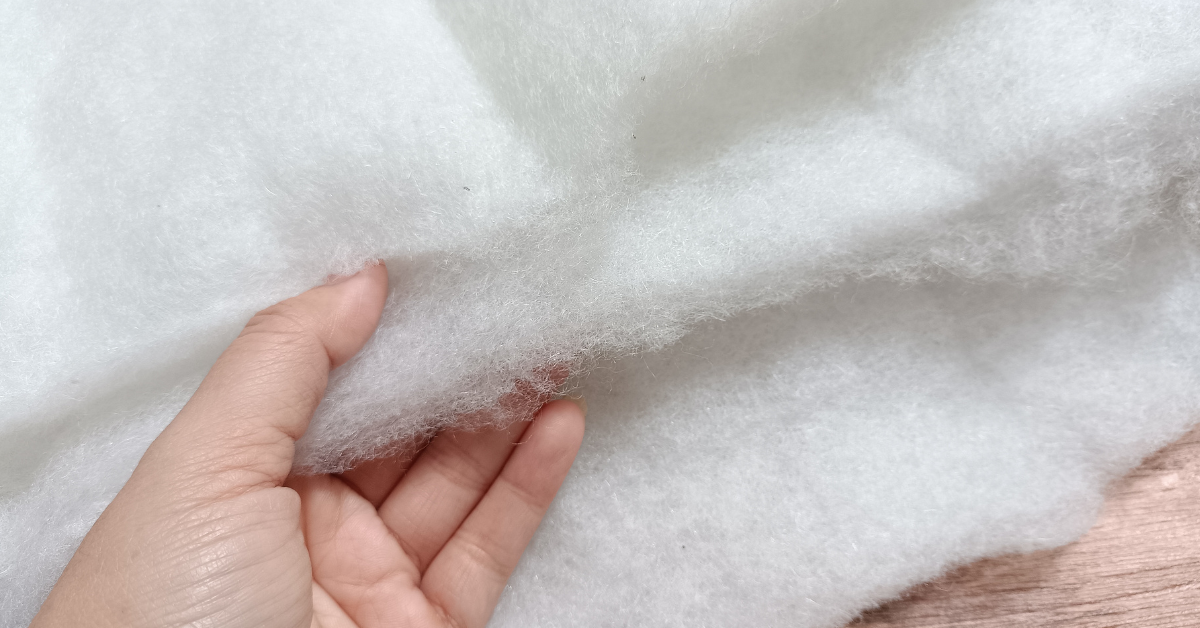If you’re tired of plain old pillowcases and crave a touch of personality in your bedroom, a DIY pillowcase can be the perfect solution! Don’t worry if you’re not a sewing whiz– this project is tailor-made for beginners, and you’ll be surprised how well it can turn out on the first try. Now let’s get started!
supply list:
- Main fabric-27”x WOF (¾ yd)
- Border fabric-9”x WOF (¼ yd)
- Accent fabric-2”x WOF
- Coordinating thread
- Sewing Machine
- Pins
- Iron
- Ironing board/mat
- Self-healing mat
- Rotary cutter
- Acrylic ruler 6”x24
*contains affiliate links
Step-by-Step Instructions for Your DIY Pillowcase:
- Keep all fabric folded (selvage edges are lined up).
- Stack the main fabric, border fabric, and accent fabric lining up the folds of the fabric and trim (using your rotary cutter, ruler, and self-healing mat) off all selvage edges to make them all even.

3. Fold border fabric and accent fabric lengthwise, and wrong sides together. Press with your iron.

4. Take your border piece, unfold and open it up completely and lay it right side up on your table.

5. Unfold your main fabric and stack right side up on your border piece (long sides lined up) lining up the raw edges.

6. Take your accent piece (keep it pressed/folded) and stack it on top of the main fabric lining up raw edges.

7. Roll your main fabric into a small tube until you start to see the border fabric underneath.

8. Take the border fabric over your tube and on top of the accent piece lining up all of the raw edges. You will now have your main fabric tube inside the other pieces. Pin the raw edges of all layers.


9. Sew using ¼” seam allowance making sure to backstitch at the beginning and end. Do not sew the side seams.

10. Reach into one of the side seams and pull out the main fabric until it’s all out of the tube.


11. Fold your pillowcase’s right sides together, lining up the accent pieces and border pieces, and pin along the two sides. Sew using a zig-zag stitch, and backstitch at the beginning and end to secure.

12. Turn your pillowcase right side out, and you are ready to use your new pillowcase!
Finally, you can slip your pillow into its custom-made case! Enjoy the satisfaction of a good night’s sleep, and feel the difference from store bought bedding.
If your child loved this pillowcase tutorial they can find more kid-friendly projects inside The Makers Club some of the topics include machine sewing, hand sewing, and clay projects as well as access to ALL the courses! Check it out today!

FAQ
How Much Fabric Do I Need to Make a Pillowcase?
To make a standard pillowcase, you will generally need about 1 to 1.25 yards (0.9 to 1.14 meters) of fabric. The exact amount depends on the width of the fabric and the size of the pillowcase you’re making. Most fabrics come in widths ranging from 44 to 60 inches (about 112 to 152 cm), which is typically sufficient for a single pillowcase. It’s important to allow a little extra for hems and any pattern matching, especially if your fabric has a directional print or a specific design that needs to be aligned. If you’re making a pillowcase for a non-standard pillow size, like a king or a decorative pillow, you’ll need to adjust the amount of fabric accordingly.
What is the Best Fabric to Make Pillowcases?
The best fabric for making pillowcases depends on your personal preference and the intended use. Cotton is a popular choice due to its breathability, softness, and durability. It’s ideal for everyday use and is easy to wash and care for. If you’re looking for a more luxurious feel, silk or satin are excellent choices as they can help reduce hair frizz and skin creases. Linen is another great option for its natural, breathable qualities, making it perfect for warmer climates. Ultimately, the choice of fabric should match your comfort preference, aesthetic taste, and any specific needs like hypoallergenic materials or temperature regulation.
How Big is a Standard Pillowcase?
A standard pillowcase typically measures around 20 to 22 inches (50 to 56 cm) in width and 30 to 32 inches (76 to 81 cm) in length. This size is designed to fit a standard-sized pillow, which is usually 20 inches (51 cm) wide by 26 inches (66 cm) long. However, it’s always a good idea to check the specific dimensions of your pillows, as sizes can vary slightly. If you have a queen or king-sized pillow, the pillowcase will be larger to accommodate these sizes. Queen pillowcases are often around 20 inches by 30 inches, while king pillowcases measure approximately 20 inches by 36 inches.







One Response
This will make is so much easier to teach my students how to sew.